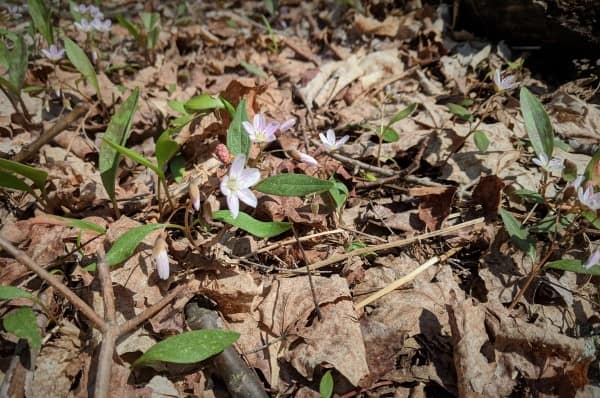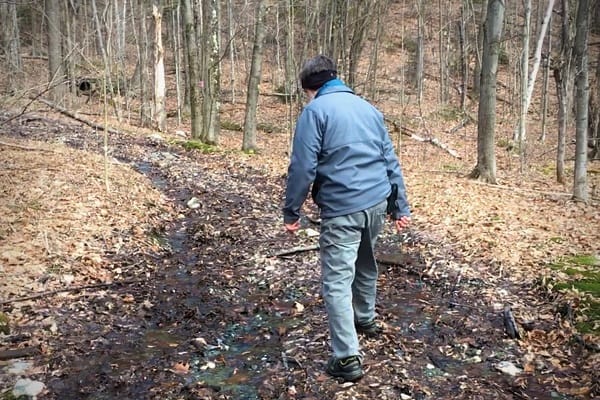Have you noticed a bounce in your step? Has an urge to walk or bike to work suddenly come upon you? Maybe you’ve noticed that you don’t need to wear as many layers – that you can move freely again without the burden of long underwear and a sweater, a fleece, down jacket, shell, mittens, and a hat. Oh, and don’t forget the scarf…
The early snowmelt and occasionally mild temps are calling us to get outdoors and enjoy the landscape Williamstown has to offer. Early spring is one of my favorite times to get on the trail. Hiking before the leaves come out expands your view into the woods. The topography of the land becomes prominent, and there may even be some surprise views that are normally hidden during the green season. Another highlight of this time of year is the appearance of spring ephemerals: plants that bloom before trees leaf out and shade the ground. Sometimes the window to see these plants is very brief, and it can vary with temperature and available moisture. I’ve already seen Snowdrops and Skunk Cabbage at lower elevations, and soon Trillium, Spring Beauty, Dutchman’s Breeches, Hepatica and Trout Lily will dot the understory.

Expect Some Obstacles
Hiking in early spring comes with its challenges. The weather is notoriously fickle, and trails may be quite muddy when the top surface melts before the soil underneath does. There may also be icy sections here and there. Large branches and even entire trees can fall across the trail as a result of winter storms, high stream water, and thawing roots. Feel free to move smaller branches from the footpath as you are able, and report any large obstructions to us using this handy Trail Report form.
Tread Lightly, Hike Safely
Try to avoid the urge to walk around water and wet areas on a trail. When you creep along the trail’s edge to avoid a muddy section, it widens the path and negatively impacts the surrounding landscape. Many perennial wet areas have rock stepstones, though you may have to probe a bit with your hiking pole to find them. Very rarely is the mud so deep you can’t just walk right through – it’s just mud and your shoes and feet won’t suffer any permanent damage.
The shoulder season between winter and spring raises the possibility of sudden weather changes. You will also find that higher elevations can be significantly cooler and windier than valley locations. It’s a smart move to bring an extra layer and rain gear, even if the weather looks benign at your starting time and location. And of course, before you head out, always let someone know your route and planned return time.

Report issues
In closing, I’d be remiss if I did not remind you that the trails we love to hike are all made possible with the help of volunteers (people like yourself) who pitch in a few days a year to keep our trails open, easy to follow, and in good shape. There are more miles of trail than volunteer trail stewards, so it sometimes takes awhile to scout and find all of the tree blowdowns or other trail damage. We concentrate our efforts on the most popular trails and those with known, ongoing issues. You can help us keep up with conditions wherever you hike by reporting any problems you encounter and by joining our effort. We have trails that need adopters and will also be organizing work days to take on larger projects over the course of the season. Check in with the WRLF Events page and subscribe to our eNews – better yet, support all WRL does by becoming a member!
Happy hiking,
Cosmo Catalano, Chair
WRL Trails Committee
